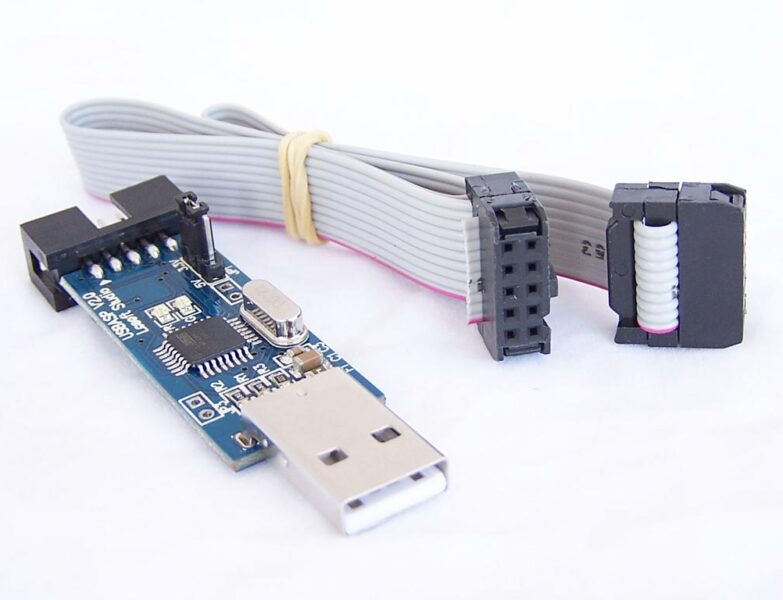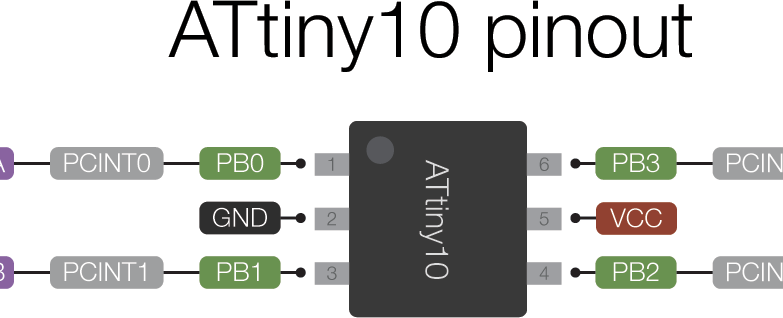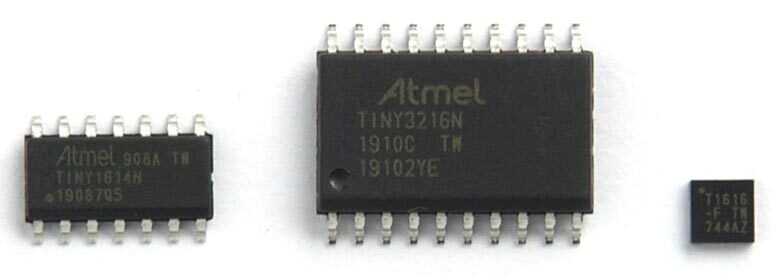Ponyprog Circuit for AVR & PIC16F84
- Kyriakos Kontakos
- kkontak@hotmail.com
- 21.178 Views
- moderate
- Non tested
Schematic
Comments
All resistors are 1/4W.The circuit is powered by 9…15V DC or AC. When In Circuit Programming (ISP) connectors are used, is possible the programmer to be powered from targets power source. Diodes D2 and D6 protect the regulator LM7805, when targets power is used.
‘ XTAL JUMP ‘ is used to cut XTAL when the AVR has internal RC oscillator enabled.
‘FAMILY JUMP’ is used to select which ATMELs family to program, AVR series (ATtinyXX, AT90SXXXX, ATmegaXXX) or 8051 series (AT89Sxxxx).
PIC JUMP is used to switch between Microchips PIC and ATMELs microcontrollers. With jumper ON only PIC can be programmed, while OFF can program ATMELs microcontrollers. If you dont need to program PICs, you can leave their board area unsoldered. The PCB has been designed so that DIP sockets or ZIF sockets can be used. Because of its cost, it is recommended that only one ZIF is used combined with some pin-arrays to switch between the four different places.
The board must be connected to a PC COM port through a 9 pin to pin cable and work with the below application:
‘PonyProg2000 – Serial Device Programmer
Copyright (C) 1997-2001 by Claudio Lanconelli
E-mail: lancos@libero.it
Download last version of PonyProg2000 at the address:
http://www.LancOS.com ‘.
Supported microcontrollers are:
ATMELs AVR series
ATtiny12, ATtiny15, AT90S1200, AT90S1200A, AT90S2233, AT90S2313, AT90S2323, AT90S2343, AT90S4414, AT90S4433, AT90S4434, AT90S8515, AT90S8535, ATmega8, ATmega16, ATmega161, ATmega163, ATmega323, ATMELs 8051 series, AT89S53, AT89S8252
MICROCHIPs PIC series
PIC16x83, PIC16x84, PIC16F84A
And some other programmable ICs (memories, microcontrollers) which Ponyprog support but need a board adapter to be programmed through ISP connectors. For more information see Claudio Lanconelli site .



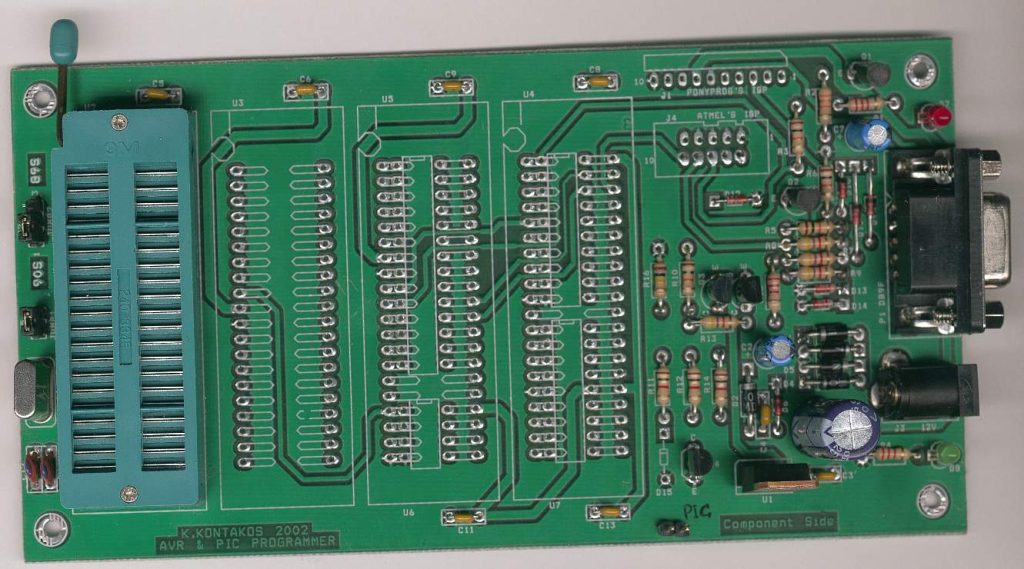
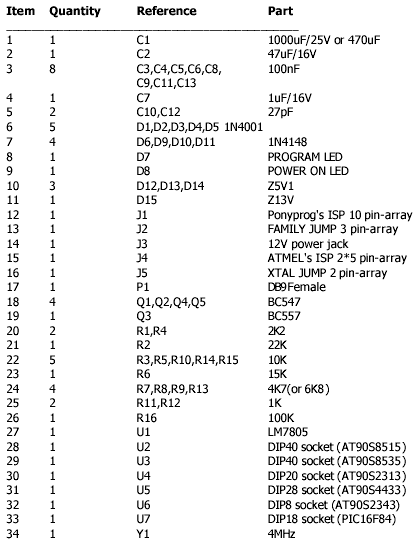
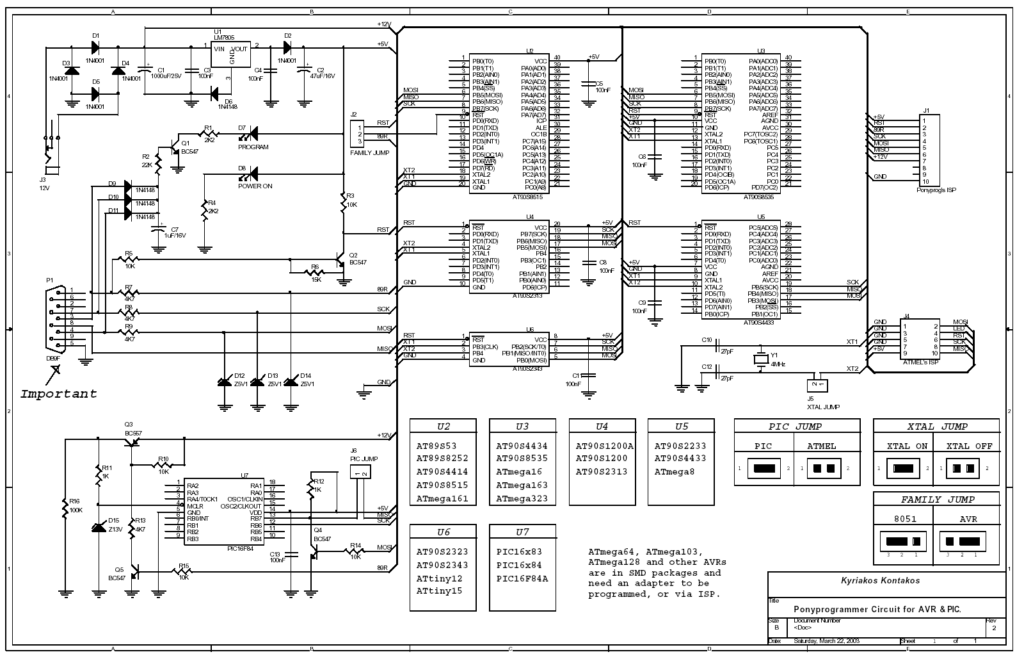
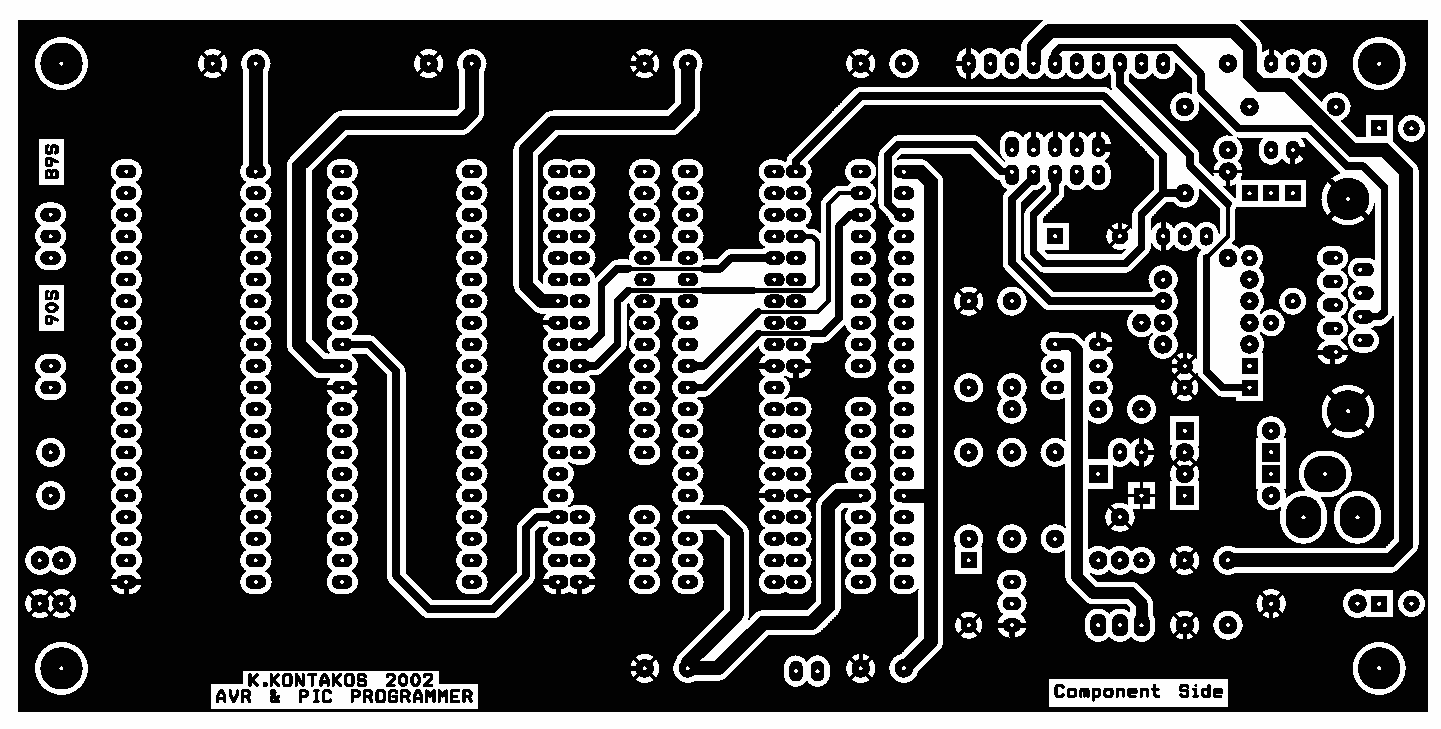
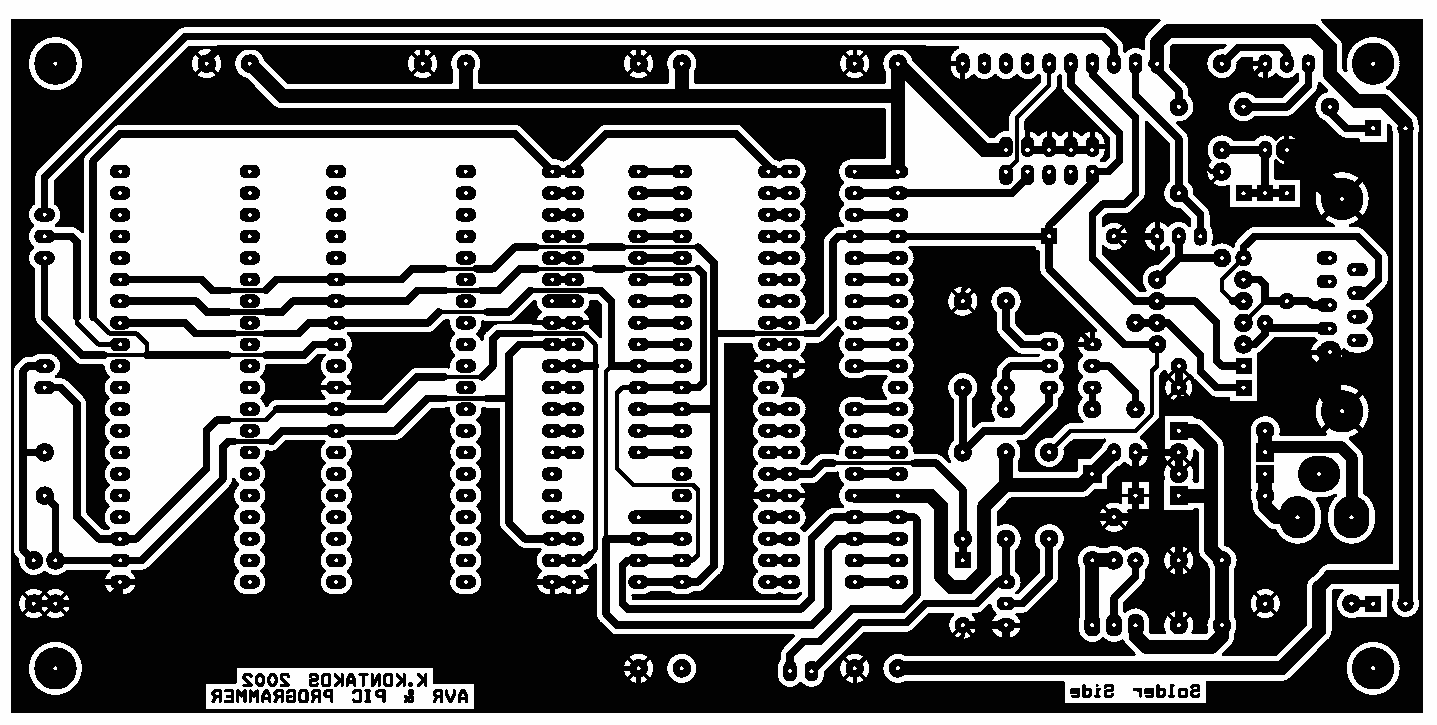
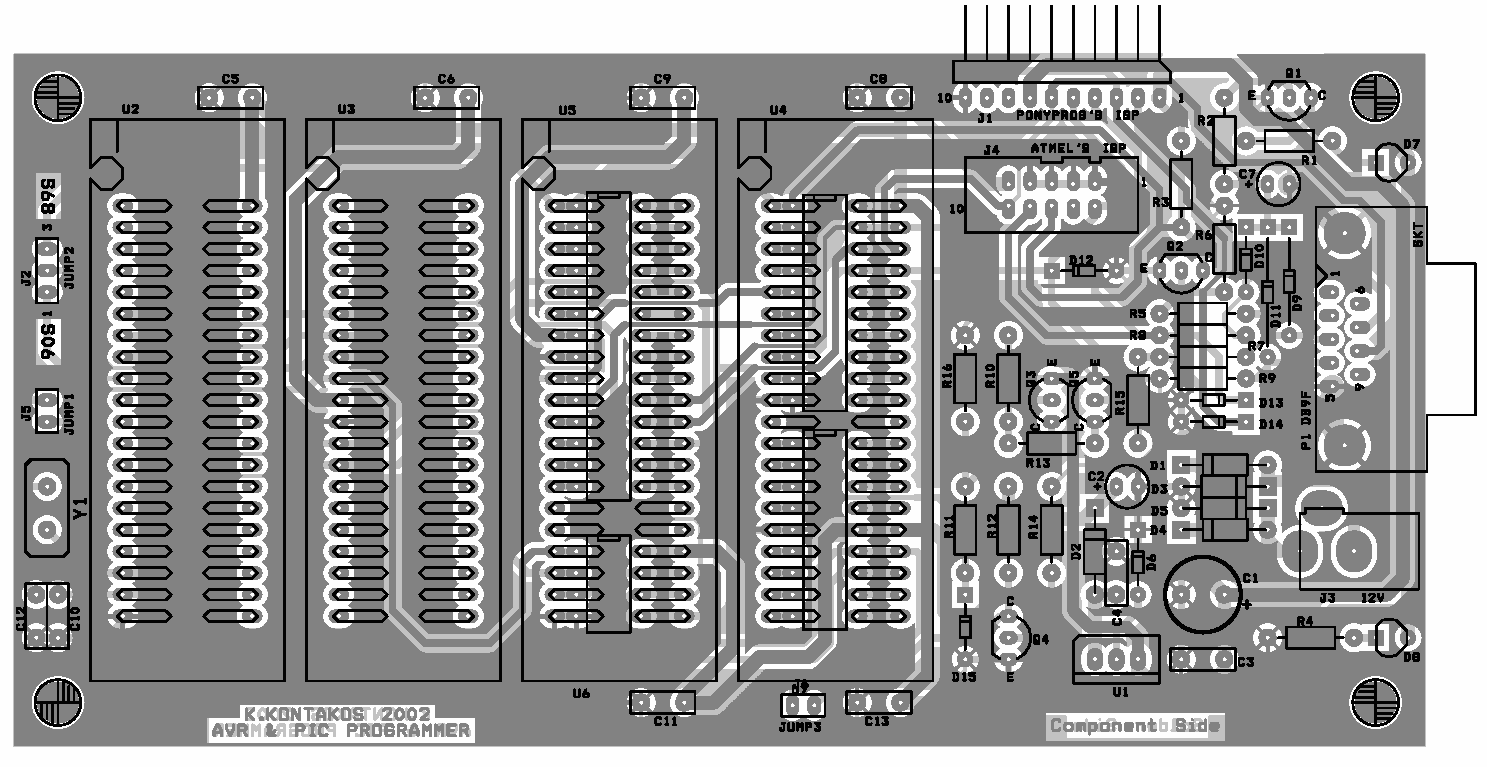
.png)


